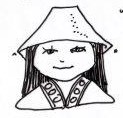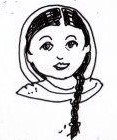Introduction
Why We Wrote this Book
This project came about as the result of B.C. business textbooks that we consulted giving only a passing treatment of Indigenous Peoples and their communities, which seemed odd to us. All around us were the Truth and Reconciliation Commission’s Calls to Action [PDF] and the United Nations Declaration on the Rights of Indigenous Peoples (UNDRIP) articles that our institution, Coast Mountain College, was advocating for. A piece of that puzzle was “Indigenizing our curriculum,” which involved incorporating both Indigenous content and Indigenous means of learning. However, when we wanted to actually implement those recommendations in our classes by incorporating relevant content, we were stuck with what we had, which is to say that we were stuck with little more than nothing at all.
Business instructors had support available at an institutional level to incorporate Indigenous means of learning, but on an individual class basis, they were expected to incorporate Indigenous content where no published textbook content existed. If no content existed at all, instructors were rendered unable to do the subject matter justice. If instructors were lucky enough to have learned the relevant content in their own studies (which seems unlikely, considering how recent the Indigenizing movement is), then they spent valuable time making their own content, like we did.
We decided to formalize the work we’ve done so that other instructors and students could be the beneficiaries of our learning and growth journeys. We are proud to play a role in business schools implementing UNDRIP and the Calls to Action. Should there be shortcomings in our work, it is not the fault of the people who generously gave their time to us, but that of the authors alone.
We wish you well on your learning journey.
—Annette Sorensen and Scott van Dyk
Characters
This text uses the same characters throughout in various scenarios and questions. These characters are designed to reflect a wide swath of people who may be using this textbook and reflect the public at large.
Daniel is the project manager of a liquefied natural gas pipeline project that is to go through Indigenous territory.

Stacey is the recently elected band chief of the Gitxsan Nation, located in northern British Columbia.

Sadie is a hereditary matriarch of the Gitxsan Nation.

Clyde represents the hereditary chiefs of the Gitxsan Nation.

Gurpreet is an international student from the Punjab region of India. She is in the first year of a business administration program.

Josh is a non-Indigenous college student. He has a part-time job and works hard in his studies.

Media Attributions
- “Daniel” © Marianne Brørup Weston is licensed under a CC BY 4.0 Licence
- “Stacey” © Marianne Brørup Weston is licensed under a CC BY 4.0 Licence
- “Sadie” © Marianne Brørup Weston is licensed under a CC BY 4.0 Licence
- “Clyde” © Marianne Brørup Weston is licensed under a CC BY 4.0 Licence
- “Gurpreet” © Marianne Brørup Weston is licensed under a CC BY 4.0 Licence
- “Josh” © Marianne Brørup Weston is licensed under a CC BY 4.0 Licence

